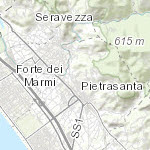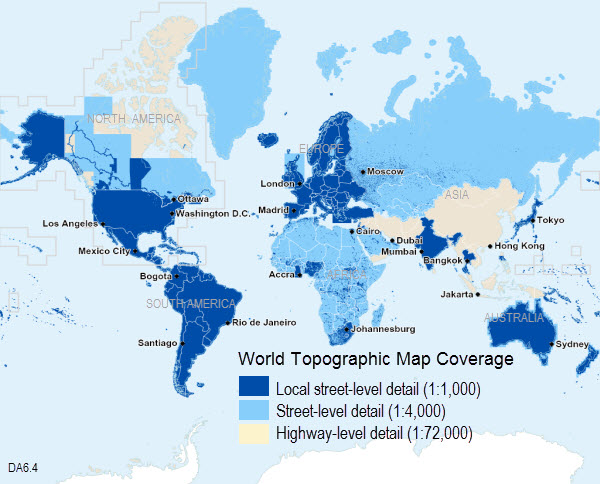
Map Service Name: World_Topo_Map
Description: This map is designed to be used as a basemap by GIS professionals and as a reference map by anyone. The map includes administrative boundaries, cities, water features, physiographic features, parks, landmarks, highways, roads, railways, and airports overlaid on land cover and shaded relief imagery for added context.
The map provides coverage for the world down to a scale of ~1:72k in Australia and New Zealand, India, Europe, Canada, Mexico, the continental United States and Hawaii, South America and Central America, Africa, and most of the Middle East. Coverage down to ~1:1k and ~1:2k is available in select urban areas.
This basemap was compiled from a variety of the best available sources from several data providers, including the U.S. Geological Survey (USGS), U.S. Environmental Protection Agency (EPA), U.S. National Park Service (NPS), Food and Agriculture Organization of the United Nations (FAO), Department of Natural Resources Canada (NRCan), GeoBase, Agriculture and Agri-Food Canada, Garmin, HERE, Esri, OpenStreetMap contributors, and the GIS user community. For details on data sources in this map service, view World Topographic Map Contributors (PDF).
As illustrated in the coverage map below, worldwide coverage is provided in World Standard and Advanced (down to ~1:1k) and World Basic (down to ~1:72k); regional coverage is provided in North America Standard and Advanced (down to ~1:1k).

Attribution: Sources: Esri, HERE, Garmin, Intermap, INCREMENT P, GEBCO, USGS, FAO, NPS, NRCan, GeoBase, IGN, Kadaster NL, Ordnance Survey, Esri Japan, METI, mapwithme, NOSTRA, © OpenStreetMap contributors, and the GIS user community
Coordinate System: Web Mercator Auxiliary Sphere (WKID 102100)
Tiling Scheme: Web Mercator Auxiliary Sphere
Map Service Data Format: Map server cache in JPEG format
Metadata: When the data appliance is installed, citation data (also known as metadata) is automatically exposed through the REST endpoint for the World_Topo_Map service. These are not feature services but rather feature layers within a map service. The key difference is that feature layers can be queried, but they cannot be edited. With the Identify tool in ArcMap, you can see the resolution, collection date, and source of the imagery at the location you click. Values of 99999 mean that metadata is not available for that field. The metadata applies only to the best available imagery at that location. You may need to zoom in to view the best available imagery.
You can view the citation layer at http://<services.arcgisonline.com>/arcgis/rest/services/World_Topo_Map/MapServer/4 (substitute <services.arcgisonline.com> with the local ArcGIS server name).